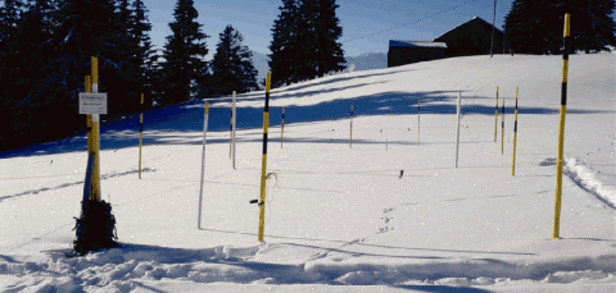Capturing data in the field is essential both for avalanche warnings and research purposes. Data is collected either manually or by the automated IMIS stations. Alongside observations, assessments and modelling, measured values rank among the most fundamental data for generating avalanche bulletins.
Measuring network – manual measuring sites. Click on coloured dots for details.
The SLF avalanche warning service operates an extensive network of manual measuring sites. The sites are distributed throughout the Swiss Alps and predominantly situated in intermediate altitude zones, between 1000 and 2000 m. Some of the measurement series already span very long periods and are therefore highly valued; the data are also used for climatological and hydrological purposes.
The measuring sites are in flat and wind-protected fixed locations. The observers who perform the measurements are trained and paid by the SLF. Data is collected from the start of November until the end of April and after that until half of the measuring site is snow-free. On some measuring sites event-based measurements are also collected during the summer months. Measurements take place between 7 and 7.30 am whenever possible.
The following variables are measured at all measuring sites:
- Snow depth and 24-hour new snow (current data)
Additional variables are measured at numerous sites:
- Snow properties such as snow surface structure
- Fresh snow water equivalent (kilograms of snow per square metre, or millimetres water column if the new snow sample were to be melted without changing the base area).
Additional data is collected at a number of measuring sites, typically by way of observations and assessments, or bi-weekly snow profiles. Some of the other SLF observers collect and deliver similar data, but not from fixed locations.
Contact ¶
data@slf.ch
